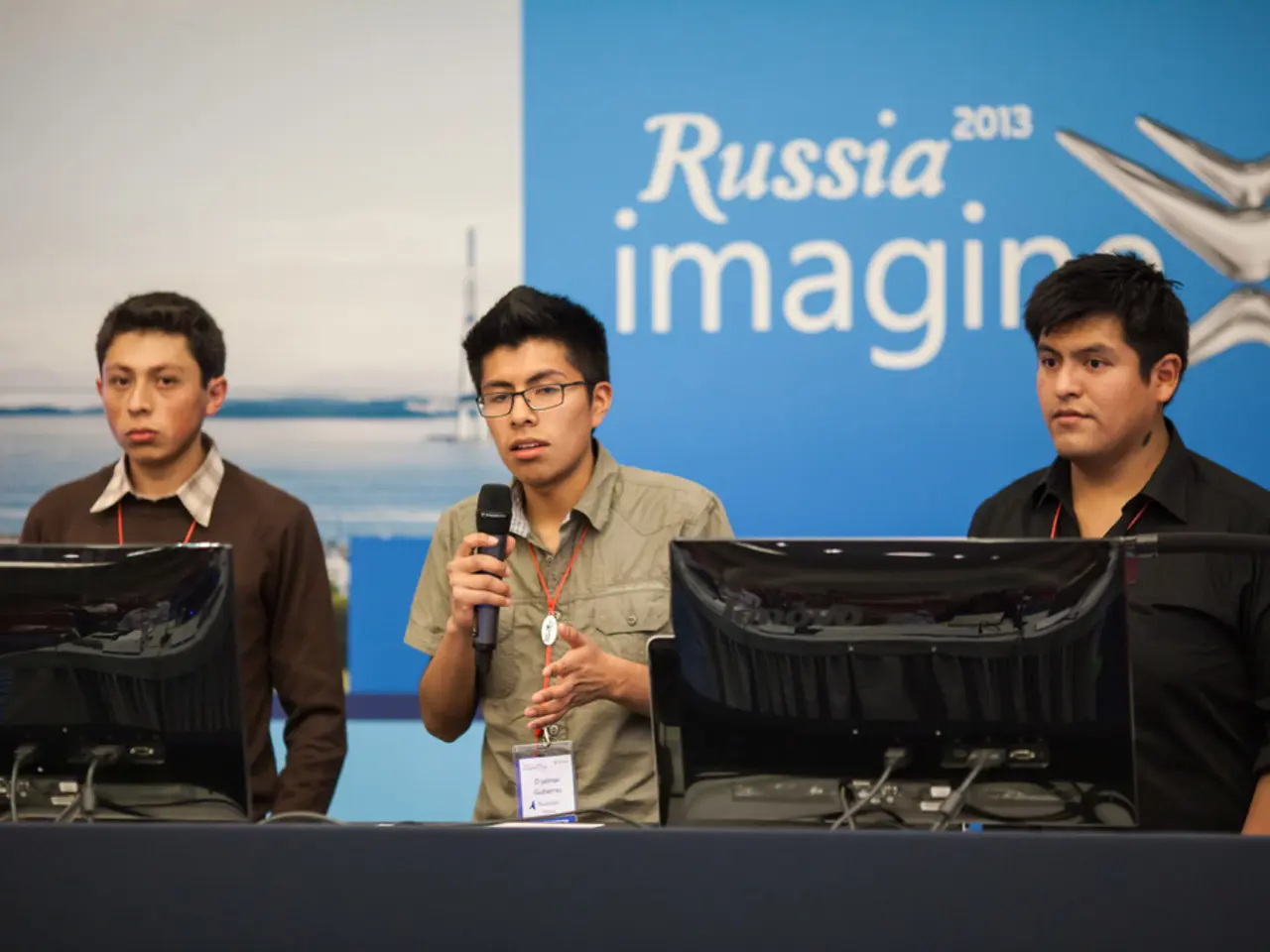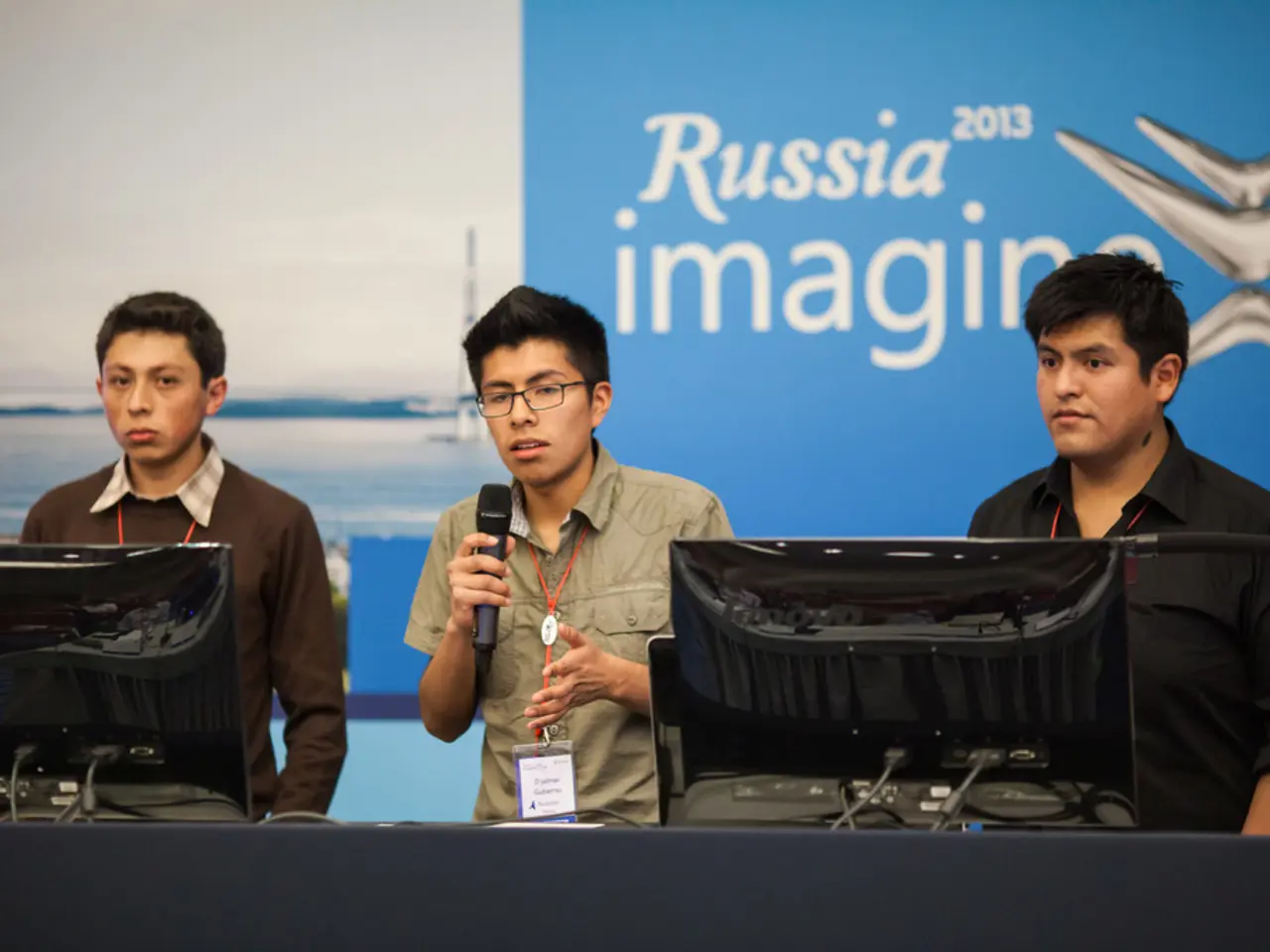Adapting Strategies to Hinder Moscow's Attack Blueprint: Insights from Prague to Kyiv
Russia's approach to foreign intervention has been shaped by a strategy known as "asymmetric warfare." This strategy, developed by the Russian General Staff and influenced by British strategist Sir Basil Liddell Hart, focuses on exploiting enemies' vulnerabilities rather than direct frontal confrontation.
Historical Examples of Russia's Asymmetric Warfare Strategy
One of the most prominent examples of this strategy was Russia's annexation of Crimea in 2014. By using hybrid warfare tactics, including covert military presence, propaganda, and political manipulation, Russia was able to seize Crimea without a large-scale conventional war [4].
In Ukraine post-2022, the strategy escalated to a full-scale invasion but still relied on hybrid warfare elements such as irregular armed groups, cyber attacks, and false narratives to justify intervention and destabilize Ukrainian sovereignty [1][2][5].
Russia has also extended this playbook to other regions, such as Kazakhstan, where it has denied sovereignty and used cultural and linguistic claims to justify potential military or political encroachments, reflecting a broader neoisolationist and imperial doctrine dubbed "narrative imperialism" [2].
The Role of Hybrid Warfare Operations
Russia's invasion playbook includes hybrid warfare operations that extend beyond kinetic battlefields. These operations involve sabotage, influence campaigns, and local proxies in Europe and the West to undermine security and control narratives [3]. However, these efforts have sometimes suffered from poor execution and unreliable operators.
Case Study: Ukraine's Antonov Airport
A notable example of countering Russia's hybrid warfare tactics can be seen in the defence of Ukraine's Antonov Airport. The CIA warned Ukraine of Russia's planned air assault on the airport, and a unit of around three hundred troops, including elements of the 4th Rapid Reaction Brigade of the National Guard, succeeded in frustrating the Russian forces' seizure of the airport and rendering the airstrip unusable [1].
The Importance of Countermeasures
Understanding and delineating the sequence of events Russia has historically used to initiate a coup and devising countermeasures to thwart these actions may prove critical in defending against the next Russian invasion. For instance, President Zelenskyy's decision to remain in the country and not flee during the invasion was critical for foiling Russia's information warfare, as his frequent social media posts showing him and his entourage walking through the streets of Kyiv provided a powerful counternarrative to Russian propaganda [1].
Global Preparedness
Similar capabilities exist within European special operations and conventional forces, including countries with total defense plans, such as Finland and Sweden. Switzerland created an airport defence regiment during the Cold War to safeguard Zurich Airport from Soviet airborne troops. Georgia, which has been subject to Russian disinformation and other hybrid tactics for years, is also preparing for potential Russian aggression [1].
In conclusion, Russia's invasion playbook is a blend of indirect military action, hybrid tactics, political and information warfare, territorial assertion based on cultural claims, and strategic exploitation of Western distractions or hesitations. It has been applied with variations in Crimea, Ukraine, and potentially threatens other neighboring states in alignment with Russia's neo-imperial ambitions [1][2][3][4][5]. Preparedness and understanding of this playbook are crucial for nations seeking to defend against such tactics.
[1] S. Cooper, "Russia's hybrid warfare: understanding the Kremlin's tactics," Chatham House, 2018. [2] J. S. Brown, "Russia's narrative imperialism," Foreign Affairs, 2019. [3] A. R. Kupchinsky, "Russia's hybrid warfare: a new threat to Europe," Atlantic Council, 2015. [4] M. Kofman, "Crimea 2014: the annexation of a hybrid war," RUSI, 2014. [5] T. R. Rid, "Russia's cyber war: from the Baltics to Washington," Brookings Institution, 2016.
- The strategy of asymmetric warfare, used by Russia, has been traced back to its annexation of Crimea in 2014, which was carried out using hybrid warfare tactics that included covert military presence, propaganda, and political manipulation.
- Russia's approach to intervention in countries like Ukraine post-2022 and Kazakhstan has relied on hybrid warfare elements such as irregular armed groups, cyber attacks, and false narratives, reflecting a broader neoisolationist and imperial doctrine.
- The role of hybrid warfare operations extends beyond kinetic battlefields, involving sabotage, influence campaigns, and local proxies in Europe and the West to undermine security and control narratives.
- Understanding the sequence of events Russia historically uses to initiate a coup and devising countermeasures to thwart these actions is critical in defending against the next Russian invasion, as seen in the successful defense of Ukraine's Antonov Airport.
- Global preparedness against Russia's hybrid warfare tactics involves sophisticated capabilities within European special operations and conventional forces, as seen in Finland, Sweden, and Georgia, who are preparing for potential Russian aggression.





